High Temperatures and Low Tides in the North of the South: 4 nights in Punta Gallinas, Colombia
The seed of Punta Gallinas was planted firmly in our head from a British expat up in the hills of Minca. By the time we returned back to Santa Marta, it’s roots had already buried themselves deep in the soil of our imagination and refused to stop burrowing down. What we initially ruled out as an idea that seemed “too far out of our budget” and “not worth the effort” suddenly had a new, insatiable appeal. From a seasoned Colombia backpacker-turned-permanent-resident, it was given a “Class A travel” review. We couldn’t shake the idea of living amongst an isolated fishing tribe in a truly unique desert-meets-the-Caribbean-sea environment. We had read that there was a booming a lobster population described as being so boisterous that the shellfish were practically crawling out of the water and onto your plate. The notion began gaining strength like a metaphorical hurricane, with wind speeds picking up as each fleeting though of what lay ahead marinated in our minds. We dissected travel guides, Internet forums, and every resource we could find to figure out how to do this trip affordably before setting off at 4:30 AM the next morning with one destination in mind: Punta Gallinas.
Our final destination for our first travel day (of 2) was a desert beach town in the named Cabo de la Vela. In order to get there from Santa Marta, we had to take a taxi, bus, car, and 4×4 truck. At first glance this just sounds like a typical Latin American travel day. What is missing from this picture is the fact that this part of Colombia is one big desert. The area is known as La Guajira, and is a stretch of vast, open sand dunes, salt flats, dried up lake beds, and not much else. The Wayuu Tribe settled in this area sometime around 150 AD from the Amazon when they were searching for less hostile territories. The harsh environment has left the tribe very isolated from the rest of the westernizing world, and they apparently had very little contact with conquistadors when the America’s were being stolen from it’s indigenous inhabitants in the name of glory, god, and gold.
Our last leg of the day began in the dusty, bustling trading town of Uribia. The Wayuu culture became omnipresent the minute we got out of our truck. Women  wearing full length, brightly colored fabrics wrapped around their entire bodies were suddenly everywhere. I was amazed that their garb was completely spotless and all appeared to be brand new, given the dust and dirt flying around with each passing tuk-tuk. Bikes, trucks, and cars were whizzing around in a hectic fashion in every direction. My attire had already collected a pound of air born dust by the time our truck lurched to a halt in the bustling market crowd. We were instantly hustled over to a huge 4×4 pick up truck with a covered roof over the truck bed in the back. We were told it was leaving shortly (quince minutos, siempre) but we had been traveling far too long at this point to believe that old gag. We threw our belongings in the back and scanned the town, taking in the sights. The driver and his helper were constantly packing the roof with large boxes of food, rice, water, and general living supplies. When space ran out, they began packing the inside of the bed, exactly where we were going to be sitting. 55 gallon drums of gasoline and cooking oil, dozens of bags of dry mix concrete, and random packed cardboard boxes. The bed of the truck was filling, which naturally led to the other passengers forming a small crowd around eying what little real estate was left for seating. I started counting heads and realized this was going to be another classically latin “tight squeeze”. When the time came for departure we all sat in a human horseshoe formation, with all of our feet in the middle covering every square inch of what was left of the floor. We gave out some Penny Karma funded stickers to the kids in the vehicle, who understood some basic Spanish, and waited in our own sweat until the beat up truck roared away. The next 3 and a half hours were filled with hot, dry, unrelenting desert heat on back roads, through dried up lakes, and alongside the ocean. Each and every bump left a lasting impression on our rear ends while the heat fostered day-time delusional comas.
wearing full length, brightly colored fabrics wrapped around their entire bodies were suddenly everywhere. I was amazed that their garb was completely spotless and all appeared to be brand new, given the dust and dirt flying around with each passing tuk-tuk. Bikes, trucks, and cars were whizzing around in a hectic fashion in every direction. My attire had already collected a pound of air born dust by the time our truck lurched to a halt in the bustling market crowd. We were instantly hustled over to a huge 4×4 pick up truck with a covered roof over the truck bed in the back. We were told it was leaving shortly (quince minutos, siempre) but we had been traveling far too long at this point to believe that old gag. We threw our belongings in the back and scanned the town, taking in the sights. The driver and his helper were constantly packing the roof with large boxes of food, rice, water, and general living supplies. When space ran out, they began packing the inside of the bed, exactly where we were going to be sitting. 55 gallon drums of gasoline and cooking oil, dozens of bags of dry mix concrete, and random packed cardboard boxes. The bed of the truck was filling, which naturally led to the other passengers forming a small crowd around eying what little real estate was left for seating. I started counting heads and realized this was going to be another classically latin “tight squeeze”. When the time came for departure we all sat in a human horseshoe formation, with all of our feet in the middle covering every square inch of what was left of the floor. We gave out some Penny Karma funded stickers to the kids in the vehicle, who understood some basic Spanish, and waited in our own sweat until the beat up truck roared away. The next 3 and a half hours were filled with hot, dry, unrelenting desert heat on back roads, through dried up lakes, and alongside the ocean. Each and every bump left a lasting impression on our rear ends while the heat fostered day-time delusional comas.
 We drove across endlessly flat dried up lake beds that disappeared in the mid day heat in the distance just like a mirage. The scene was just like staring at a long, flat asphalt road on any sunny afternoon in late July; we could have been driving anywhere in the world, and we wouldn’t know if we were coming or going. Eventually I spotted the end of the lake bed in the distance, and the land began to grow from the tire tracks that guided our truck in the right direction. Little shacks popped up in between the bushes and barely living desert trees. It was hard to imagine daily life out here given the harsh environment. We made a few pit stops along the way to drop off big bags of supplies to houses that commissioned delivery of the goods. It was like Colombia’s version of PeaPod, only in with basic supplies in the desert. The teal blue ocean shimmered beyond the brown dirt, revealing our proximity to the deliciously crisp looking waters. We couldn’t wait to get in and get the sweat off our skin. Around noon that day our exhausted bodies we were dropped off in steamy, shadeless gathering of Cabo de la Vela.
We drove across endlessly flat dried up lake beds that disappeared in the mid day heat in the distance just like a mirage. The scene was just like staring at a long, flat asphalt road on any sunny afternoon in late July; we could have been driving anywhere in the world, and we wouldn’t know if we were coming or going. Eventually I spotted the end of the lake bed in the distance, and the land began to grow from the tire tracks that guided our truck in the right direction. Little shacks popped up in between the bushes and barely living desert trees. It was hard to imagine daily life out here given the harsh environment. We made a few pit stops along the way to drop off big bags of supplies to houses that commissioned delivery of the goods. It was like Colombia’s version of PeaPod, only in with basic supplies in the desert. The teal blue ocean shimmered beyond the brown dirt, revealing our proximity to the deliciously crisp looking waters. We couldn’t wait to get in and get the sweat off our skin. Around noon that day our exhausted bodies we were dropped off in steamy, shadeless gathering of Cabo de la Vela.
After dropping our gear we grabbed an over priced fruit smoothy. Immediately we felt the wrath of isolation and it’s effects on consumer goods (food prices always inflate at least 100-200% the further you get from trading hubs). A deliciously cool dip in the ocean followed suit and helped drop our body temperatures down a bit under the relentlessly overbearing sun. The streets were dusty and barren. It was low season. Every building along the main strip appeared to be either a hotel or a restaurant, and every one except a handful appeared to be closed. Empty stalls, tables with chairs upside down on top, doors closed, shades drawn, and nobody in sight. It was too hot to explore around too much, but we eventually found a kid hanging out in a hammock who pointed us to one of the tiendas. We came across some Wayuu women weaving colorful rugs by hand in the shelter of the shade, and watched them work their strands of yarn into beautiful patterns. We decided that they had the right idea, for the middle of the day was best spent hiding out until the sun went down and the evening breeze picked up.
That night we took a stroll to the outskirts of the village and were more than surprised to see kites in the distant fading sunset over the water. The high wind speeds in this area have donned this destination as one of the best locations for kite boarding. There were 5 or 6 young men whizzing over choppy Caribbean surf, taking flight off the miniature waves and soaring up to 20 feet in the air at times! Flips, spins, and grabs blended into the drastic headland backdrop accompanied by a beautiful Caribbean sunset. We were almost as far north as anyone could find themselves in Colombia, and the world was showing us how surprisingly rewarding stepping into unknown territories can be.
Shortly after sunset we met up with some other travelers from France, Israel, and Colombia who were trying to iron out the details of visiting the delectably enticing northern tip of South America. They were not having any sort of luck. The effort was spearheaded by an Israeli man named Ofer, who spoke fluent Spanish. He was trying to get a reasonable price a growing number of tourists who came all the way up to Cabo just get to Punta Gallinas. When we joined the team there were 8 of us, and the amount of a round trip started to tally up to well over 100 dollars a head for a one day, one night adventure! This was starting to seem like quite the lucrative business. Eventually, we all walked away in disappointment as the hostel owner in Punta Gallinas refused to budge on her price. We still didn’t want to give up, so we retreated back to our hostel to ask our owner/business man (also named Daniel) if he could do better. He agreed to a much more attractive price for the group, realizing that something was better than nothing, and got us all to agree to get up early in the morning to set off. When morning came, we packed 8 bodies into a mid sized SUV complete with backpacks, food, and gear, and went further into the unknown.
 We were brought to a cove that was sheltered by a man made jetty of boulders and rocks. Fisherman were were untangling their nets, and wading their boats to shore fully clothed in the morning light. Most of their wooden boats looked as if they were way past retirement, clinging to the last bits of fibrous pulp that kept them afloat. A young child was gathering up the silver bounty that him and his father had pulled out of the sea when a wave caught him off guard. His balance was lost as he missed his step and dropped what was certainly going to be dinner that night back into the ocean. Waves pounded the jetty, rhythmically spraying salty mist into the gusty air, relieving my hot skin for a short lived moment. Our boat eventually pulled up to shore and we soon were zipping through the Caribbean waters, headed north towards our prized destination.
We were brought to a cove that was sheltered by a man made jetty of boulders and rocks. Fisherman were were untangling their nets, and wading their boats to shore fully clothed in the morning light. Most of their wooden boats looked as if they were way past retirement, clinging to the last bits of fibrous pulp that kept them afloat. A young child was gathering up the silver bounty that him and his father had pulled out of the sea when a wave caught him off guard. His balance was lost as he missed his step and dropped what was certainly going to be dinner that night back into the ocean. Waves pounded the jetty, rhythmically spraying salty mist into the gusty air, relieving my hot skin for a short lived moment. Our boat eventually pulled up to shore and we soon were zipping through the Caribbean waters, headed north towards our prized destination.
 The wind was strong that day. Our 3 hour boat ride turned into quite memorable experience. The boat we were riding was surely used for thousands of voyages to and from that cove. There was no padding on the seats at all, and this was felt with each passing wave. 4-5 foot crests and troughs came marching towards us when we broke away from some of the shelter of the coastline. It was exciting at first, but then just really hurt our asses. Clouds seemed to hang over the land to our east so we were exposed the entire time. We all anticipated getting to shore, and getting the hell out of that humming boat.
The wind was strong that day. Our 3 hour boat ride turned into quite memorable experience. The boat we were riding was surely used for thousands of voyages to and from that cove. There was no padding on the seats at all, and this was felt with each passing wave. 4-5 foot crests and troughs came marching towards us when we broke away from some of the shelter of the coastline. It was exciting at first, but then just really hurt our asses. Clouds seemed to hang over the land to our east so we were exposed the entire time. We all anticipated getting to shore, and getting the hell out of that humming boat.
Then it became apparent that there was an end to this journey. Land rose up from the turquoise waters and the Caribbean sea became a narrow channel with mangroves on either side. Goats were standing tall on the cliffs that were about 10 meters tall looking down at half sunken ships that will surely live out the rest of their lives in the shallow, teal waters. It was good to see the green leaves and branches of the coastal forest after 3 hours of water and brown cliffs. Birds were now swooping and flying about too, adding to the mix. Very simplistic shanty’s made of mud bricks, thin trees, and spare metal parts revealed themselves as our chariot pushed along, pointing north somewhere. Our fiberglass vessel finally pointed towards a graveyard of boats that all looked their age, and were all happy to be docked on shore. We had reached the most isolated Wayuu territory at last. Bienvenidos a Punta Gallinas.
We were ushered into our hostel to take some solace from the shade. Bartering commenced on the prices of hammocks immediately, which were 50% higher than we all expected. The hostel itself was a compound, not at all like the mud brick houses we had passed in the boat. Generators were roaring away while the children and women who were running the place carried on in their house watching television or playing playstation. I noticed they had blackberries, and were punching away text messages as casual as the youth in any modern world would be. It became quickly apparent that this hostel had a somewhat of a monopoly on the tourism here. We were dropped off in the middle of nowhere, and had no other option but to stay here or wander off into the blazing hot desert. It had entrapment written all over it. But we came here to see what life was like, and we were promised a tour with our ticket price. After a heavy napping session, we all gathered into the back of their F350 and took off down the dusty paths between cacti and desert plants due north.
 Our first stop was punta norte. It is as far north as you can find yourself in South America, and felt like it was as far away from anywhere as you could ever be. Donkeys and a few goats were wandering around, eating green desert plants that had spiny spikes all over them. The two boys driving the truck were enjoying their complete and total control over us tourists. Every chance they could they would accelerate hard around turns, speed up while hitting bumps, and generally driving like maniacs. We all got laughs trying not to fall on ourselves, all screaming “DUCK!” when a branch threaten decapitation. Huge, flying red grasshoppers 4 inches in length suddenly became another threat to deal with. The terror set in when one bounced off someone’s head while we were careening probably 50 miles an hour down sand and stone paths. We parted huge herds of goats that were using the road as a path, kicking up dust as they avoided the truck being driven by the two juveniles behind the wheel.
Our first stop was punta norte. It is as far north as you can find yourself in South America, and felt like it was as far away from anywhere as you could ever be. Donkeys and a few goats were wandering around, eating green desert plants that had spiny spikes all over them. The two boys driving the truck were enjoying their complete and total control over us tourists. Every chance they could they would accelerate hard around turns, speed up while hitting bumps, and generally driving like maniacs. We all got laughs trying not to fall on ourselves, all screaming “DUCK!” when a branch threaten decapitation. Huge, flying red grasshoppers 4 inches in length suddenly became another threat to deal with. The terror set in when one bounced off someone’s head while we were careening probably 50 miles an hour down sand and stone paths. We parted huge herds of goats that were using the road as a path, kicking up dust as they avoided the truck being driven by the two juveniles behind the wheel.
I saw some of the most beautiful, strangest landscapes I can remember on that dusty ride through the desert. Coves that opened up into miles of flat, shallow seas that disappeared into the horizon before our exhausted and sun soaked eyes. One of the Frenchmen was so moved that he began crying at the sight in front of him. He told me it was the most beautiful thing he has ever seen, and I couldn’t speak against that. Smooth, almost otherworldly golden sand dunes  sat firmly on the surface with traces of ripples left behind from the wind blowing from the sea. We drove into the dunes and before long there was nothing but massive mounds of sand and ripples in all directions. Our chariot stopped the edge of a large dune with one lonely tree sat perched at the top. It was here that as our drivers told us to go play on the beach for about an hour or two while they changed a flat tire. We all began walking towards the tree at the top instinctively before we came across one of the most beautiful sights that my eyes have ever had the pleasure of viewing. We were standing on top of an active 60 foot dune that plunged acutely right down into the blue-green surf of the ocean. We played like little kids, running down the steep, loose sand as fast as possible and diving straight into the waves. I started a barrel rolling competition that toyed with the vulnerability of our bodies, as I was almost certain someone was going to walk away with at least a sprain. The sun was getting lower, but we were getting higher. We were free spirits all engulfed in the sensation of being alive and completely enamored with the beauty of the world. Our drivers soon hastily took us back from where we had came, chasing the sun as it lowered it’s position in the sky after gifting us with a memorable experience. We made it to the westernmost point on that spit of land just in time to wave goodbye to the day’s last rays.
sat firmly on the surface with traces of ripples left behind from the wind blowing from the sea. We drove into the dunes and before long there was nothing but massive mounds of sand and ripples in all directions. Our chariot stopped the edge of a large dune with one lonely tree sat perched at the top. It was here that as our drivers told us to go play on the beach for about an hour or two while they changed a flat tire. We all began walking towards the tree at the top instinctively before we came across one of the most beautiful sights that my eyes have ever had the pleasure of viewing. We were standing on top of an active 60 foot dune that plunged acutely right down into the blue-green surf of the ocean. We played like little kids, running down the steep, loose sand as fast as possible and diving straight into the waves. I started a barrel rolling competition that toyed with the vulnerability of our bodies, as I was almost certain someone was going to walk away with at least a sprain. The sun was getting lower, but we were getting higher. We were free spirits all engulfed in the sensation of being alive and completely enamored with the beauty of the world. Our drivers soon hastily took us back from where we had came, chasing the sun as it lowered it’s position in the sky after gifting us with a memorable experience. We made it to the westernmost point on that spit of land just in time to wave goodbye to the day’s last rays.
 When the morning came, most of our group was retreating back to Cabo, but Ofer, Merly, Elissa, and I had decided that we wanted to stay a few extra days to get a real feel for this unique part of the world. The family asked us if we wanted to go check out the salt flats on a across the channel. We jumped on the occasion, and were dropped off on a beach without another soul in sight. Our captains told us to walk south to find the flats. Once part of the shallow sea, the flats were just like you would image. Endlessly level, with a tiny bit of white salt crust that almost looked like snow. I damn near lost my sandal trying to snap a picture because my foot sunk into a thick, tar-like organic muck. We crossed over a ridge to get a better view of the flat to find a bizarre landscape that could have been passed off as martian. Clouds raced over our heads casting fast paced shadows over the spires of rock that stuck out from the earth with a blueish green backdrop of the sea in the distance. A large, white rock all grabbed our attention and we made our way over to it’s massive presence. The white part of the rock wound up being thousands of shells that sea birds gathered and feasted upon in one spot for some natural reason that I couldn’t figure out.
When the morning came, most of our group was retreating back to Cabo, but Ofer, Merly, Elissa, and I had decided that we wanted to stay a few extra days to get a real feel for this unique part of the world. The family asked us if we wanted to go check out the salt flats on a across the channel. We jumped on the occasion, and were dropped off on a beach without another soul in sight. Our captains told us to walk south to find the flats. Once part of the shallow sea, the flats were just like you would image. Endlessly level, with a tiny bit of white salt crust that almost looked like snow. I damn near lost my sandal trying to snap a picture because my foot sunk into a thick, tar-like organic muck. We crossed over a ridge to get a better view of the flat to find a bizarre landscape that could have been passed off as martian. Clouds raced over our heads casting fast paced shadows over the spires of rock that stuck out from the earth with a blueish green backdrop of the sea in the distance. A large, white rock all grabbed our attention and we made our way over to it’s massive presence. The white part of the rock wound up being thousands of shells that sea birds gathered and feasted upon in one spot for some natural reason that I couldn’t figure out.
In the short time that I got to know Ofer it was easy to tell that he a natural born teacher. In fact, he taught Spanish back home in Israel on the side. Communication just came out natural for him. One afternoon we started playing with our cameras with the little girls that hung around the hostel. Ofer showed one of the girls how a digital camera works, and pretty soon they were creating images for the first time ever. It was amazing to watch photography act as an interactive platform between souls from very different walks of life. It reminded me of why I love taking images, and how similar we all when you boil it down.
 The next morning we were dropped off at an inlet at 5:30 AM and got to experience the Wayuu way of life. Families bike and walk every morning to the cove to make their living off the sea. They fashioned highly effective fishing nets from nylon and tree branches, and would walk them as far out into the surf as possible, and then pull fish back onto the shore. A large mound of natural currency formed at the center of the stretched netting. Hundreds of floppy, slippery vertebrates and shellfish were picked through, leaving all the undesirable bounty behind for the wide-eyed pelicans and sea birds to feast on. It felt like I was living within the pages of a national geographic magazine. The scene showcased simplicity in it’s purest form; families working together to gather their nourishment from the ocean, an ocean that feeds their bodies and souls. They didn’t mind at all that we were staring enthusiastically and wide eyed at their way of life, watching them gleefully pick out enormous living shrimp and leave the stingrays for the birds to dine on. It was a scene that is burned forever into my mind, and I don’t mind the sting at all.
The next morning we were dropped off at an inlet at 5:30 AM and got to experience the Wayuu way of life. Families bike and walk every morning to the cove to make their living off the sea. They fashioned highly effective fishing nets from nylon and tree branches, and would walk them as far out into the surf as possible, and then pull fish back onto the shore. A large mound of natural currency formed at the center of the stretched netting. Hundreds of floppy, slippery vertebrates and shellfish were picked through, leaving all the undesirable bounty behind for the wide-eyed pelicans and sea birds to feast on. It felt like I was living within the pages of a national geographic magazine. The scene showcased simplicity in it’s purest form; families working together to gather their nourishment from the ocean, an ocean that feeds their bodies and souls. They didn’t mind at all that we were staring enthusiastically and wide eyed at their way of life, watching them gleefully pick out enormous living shrimp and leave the stingrays for the birds to dine on. It was a scene that is burned forever into my mind, and I don’t mind the sting at all.
The Wayuu people have long ago discovered groundwater sources in their desert environment. A low spot in the thorny landscape revealed trees that were lacking virtually everywhere else. Large, concrete wells were fashioned with locking metal tops so that others aren’t tempted to draw from their only freshwater source. The people created homes made from mud-bricks wherever they saw fit, and it was nearly impossible to tell why some chose their plots in the most random locations. Some were perched on top of cliffs, looking over the land from their vantage point and into the hot, dry air over the sea. I witnessed my first real sandstorm in Punta Gallinas. Huge, opaque sheets of blonde sediment swirled in slow motion in the distance. Goats munched on parched plants atop the large, blocky headlands while we processed all the beauty.
We relocated the other hostel run by a guy named Chander, who set up an organized compound of sorts. The weird thing was there weren’t any other travelers  around. We were the only ones there to enjoy hammocks, delicious food, and lots of good stories and laughter. As far away as this population is separated from the world they still love themselves some soccer. When a huge game between Colombia and Bolivia was on, a crowd of 15 grew at Chander’s house, presumably because he had satellite TV and a 24-hour generator. When space ran out in his modest dining room people spilled outside, grabbing whatever real estate the small window had to offer. After the game, Ofer organized a soccer match in the lifeless basketball court as the sun went down. Smiles, soccer, and memories ran deep into that night. There is a natural energy that kids latch onto with an almost impossibly effortless ease, and it definitely rubbed off on us. We played until we could barely see the ball anymore, loving every minute of being part of a game with strangers.
around. We were the only ones there to enjoy hammocks, delicious food, and lots of good stories and laughter. As far away as this population is separated from the world they still love themselves some soccer. When a huge game between Colombia and Bolivia was on, a crowd of 15 grew at Chander’s house, presumably because he had satellite TV and a 24-hour generator. When space ran out in his modest dining room people spilled outside, grabbing whatever real estate the small window had to offer. After the game, Ofer organized a soccer match in the lifeless basketball court as the sun went down. Smiles, soccer, and memories ran deep into that night. There is a natural energy that kids latch onto with an almost impossibly effortless ease, and it definitely rubbed off on us. We played until we could barely see the ball anymore, loving every minute of being part of a game with strangers.
Life up in Punta Gallinas is simple. The ocean breathes life into the salty, dry air. At dawn, fathers take their kids out into the warm, choppy waters and pull massive fish from homemade nets. On the morning we left we sat perched on the cliffs at 6AM, while the sun was dissolving the thunderclouds that swept in the night before, watching the boats come back in with their bounties. The fish were almost bigger than the 4 year olds proudly carrying them back to their homes. I took in the entire vista around us as much as possible before our ride back to the mainland pulled in. We loaded the boat, and began our choppy ride back towards Cabo, and then onward to Uribia. The trip was exhausting, eye opening, and lasting. This was Class A traveling, through and through. I don’t know if we will ever get back to this tip of the continent again, but I’m sure glad that we were in that corner of the world.

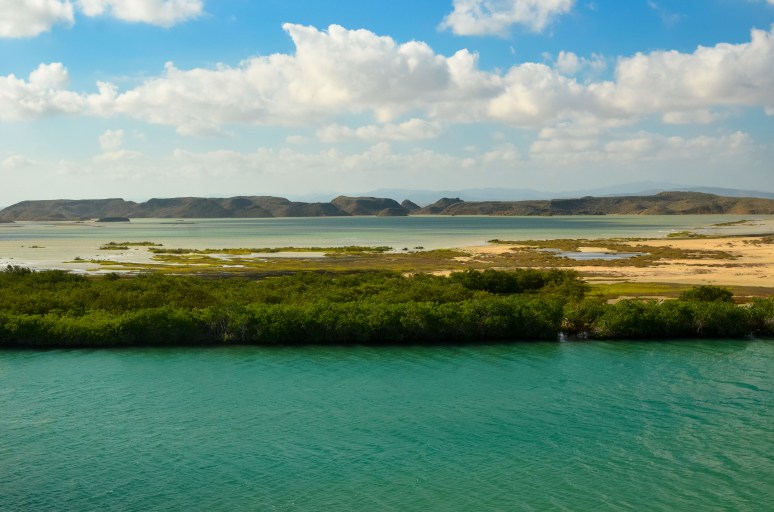


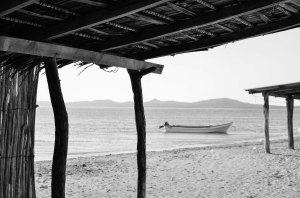






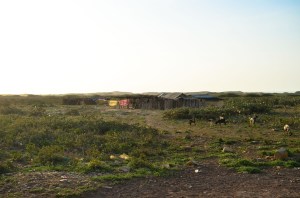




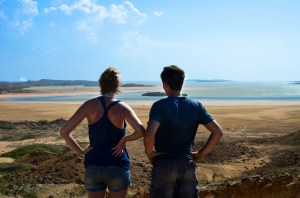


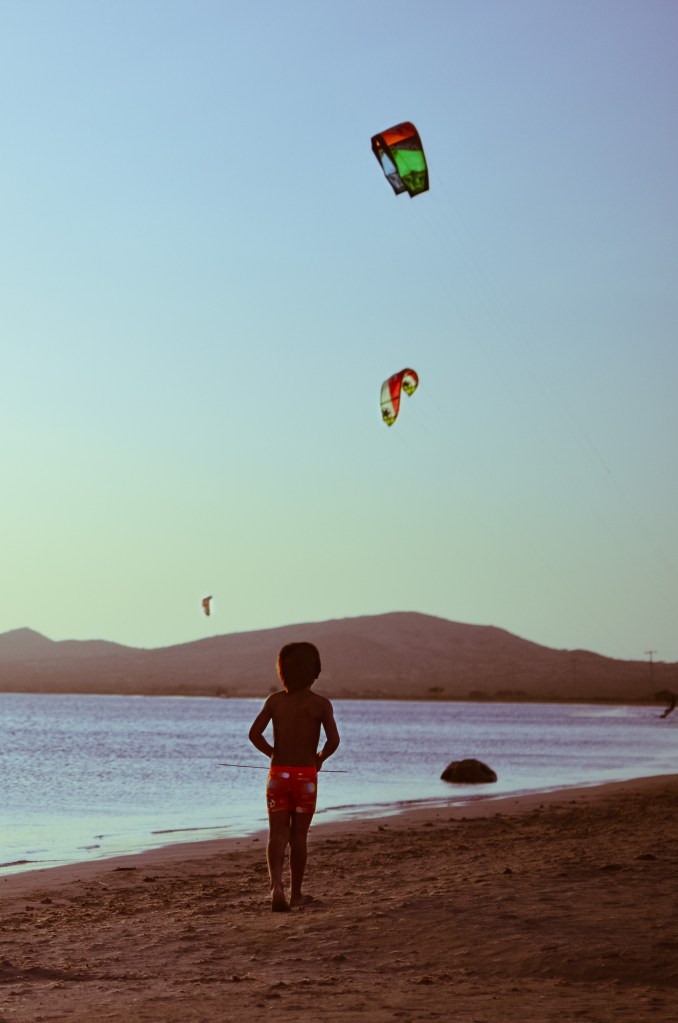

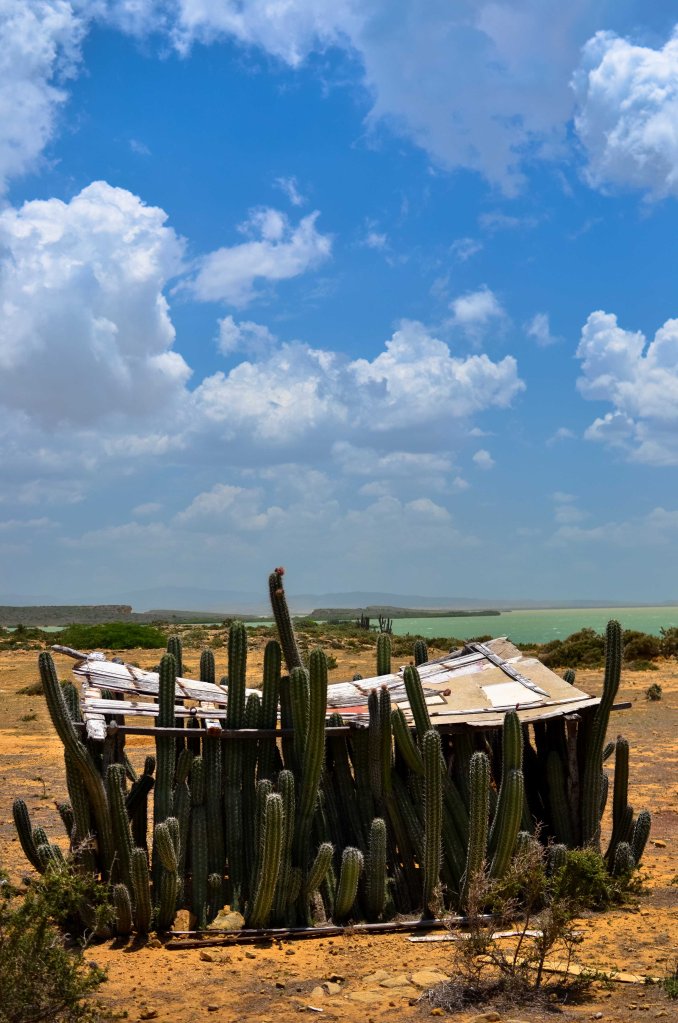






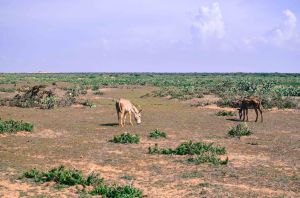
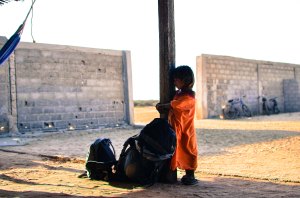



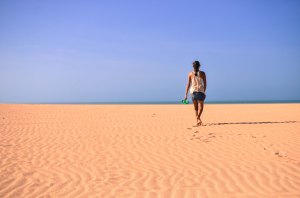
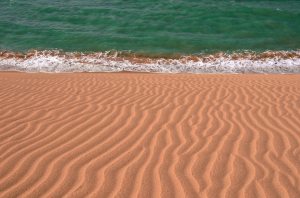
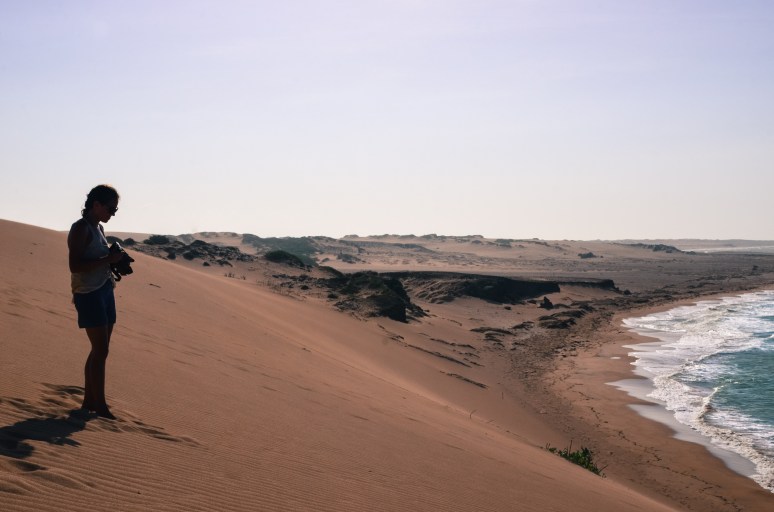
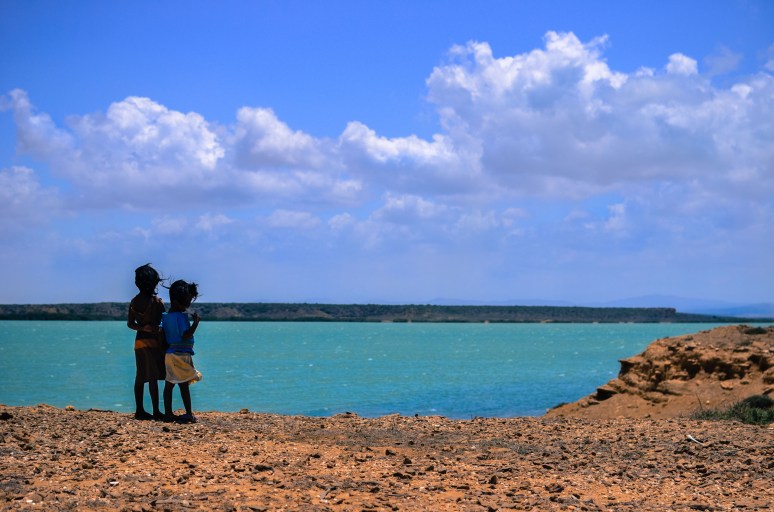









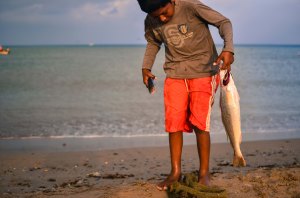
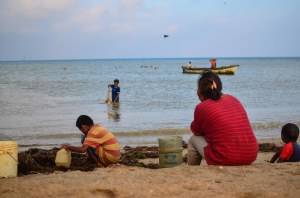
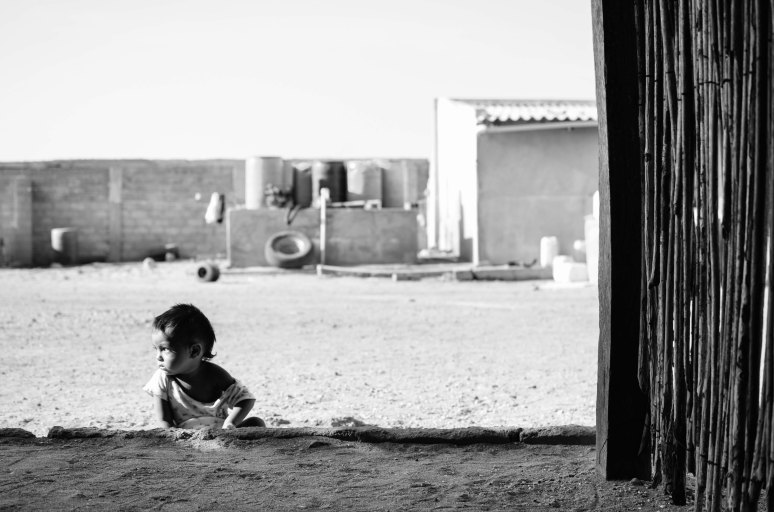





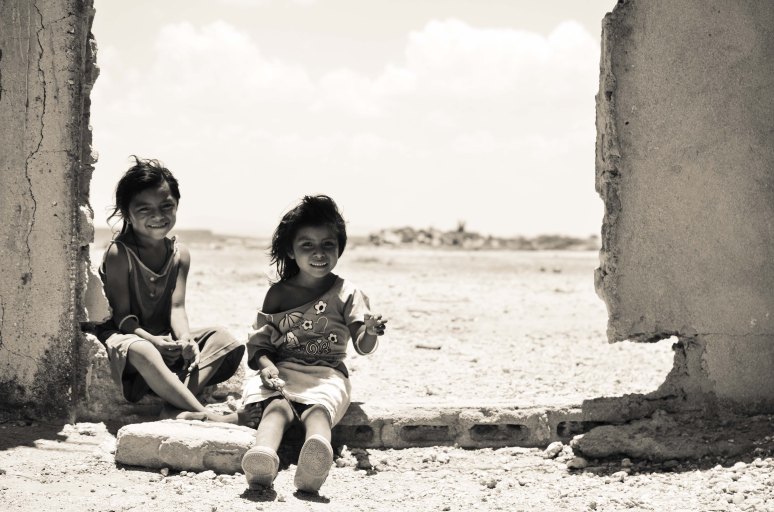
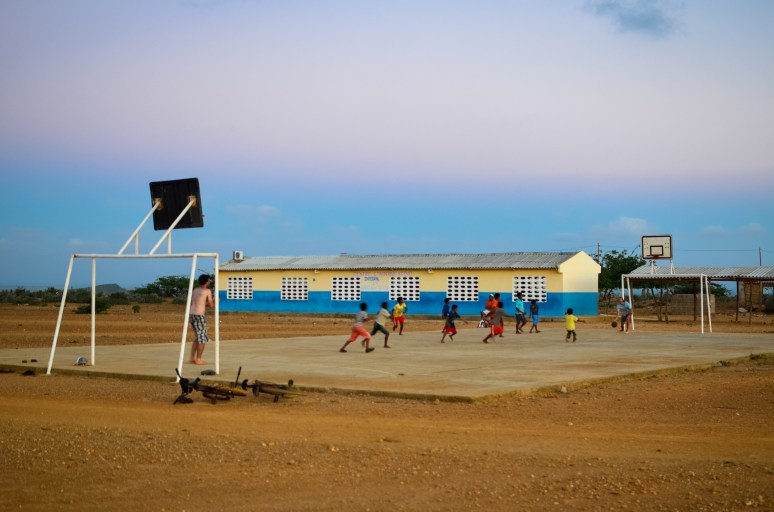

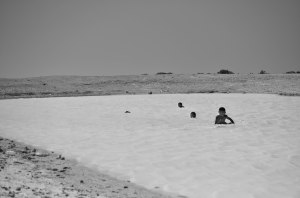




Nice !!!
Great photography!!!! Loved it.
I can’t get over your photos!! So evocative! 🙂
Keep up the fantastic work! I’ll definitely be back to your blog!
Awesome………… check this out
http://mitradebarshi.wordpress.com/
Love the layout you constructed to portray the story. Sounds like a great adventure.
Wow! It all looks amazing. My son and his lovely girlfriend just did a guest post from Colombia. I had no idea is was such a gorgeous and diverse place. I want to go!
It’s a shame you don’t have a donate button! I’d most certainly donate to this outstanding blog! I guess for now i’ll settle for bookmarking and adding your
RSS feed to my Google account. I look forward to
new updates and will share this site with my Facebook group.
Chat soon!
I think the admin of this website is actually working hard in support of his web page, because here every information is quality based material.
Hi, Neat post. There is an issue with your website in internet explorer, might test this?
IE nonetheless is the marketplace chief and a big component
of other folks will pass over your magnificent writing because of this problem.
REally dig the back story that accompanies the photos.
I have been immersed in the world of photography for a few months now and have scanned numerous pics on several blogs. I found this post to be most interesting – the pictures are priceless for perspective and narration and the scenery is breathtaking. Thanks for sharing.
I’d like to thank you for the efforts you have put in writing this website. I am hoping to see the same high-grade content by you in the future as well. In truth, your creative writing abilities has motivated me to get my very own website now 😉
Thank you for sharing your info. I truly appreciate your
efforts and I am waiting for your further write ups thank you once
again.
Have you ever considered about adding a little bit more than just your articles?
I mean, what you say is important and all. Nevertheless think
of if you added some great images or video clips to give your posts more,
“pop”! Your content is excellent but with images and video clips, this site
could definitely be one of the greatest in its niche. Great blog!
Pingback: Ipiales and the Santuario de Las Lajas. Adios Colombia! | TheAdventuresOfDr
Your short article demonstrates you happen to be quite literate and able to write eye catching articles or reviews.
Do you write for others? I will hire you for
the work (per hour, per page, .etc).
Pingback: Like Riding a Bike |
Me satisface muchisimo tu modo de comentar. Este forum de forma directa a favs!
Felicidades por ell web blog!
Has tratado el asunto de forma anodino, no yo creo que te hayas documentado para hacer comentarios.
Decepcionante.
Lamento que te sientas que mi escritura es soso . Creo que puede tener algo que ver con el Inglés a la traducción española . Mi forma de escribir en Inglés ha sido elogiado como perspicaz , cautivante e inspiradora para aquellos que quieren viajar . Me parece que sus comentarios negativos no son de buen gusto , y tal vez debería intentar escribir a ti mismo para ver los desafíos que la buena escritura puede traer. Buena suerte en sus esfuerzos .
Pingback: Awe Around The World | Like Riding a Bike – Cartagena